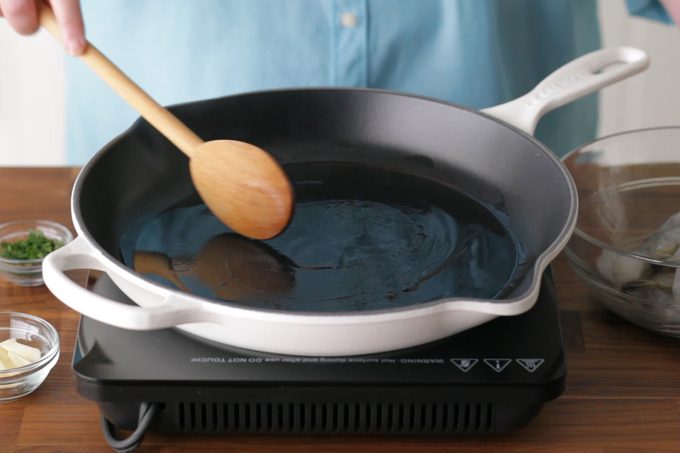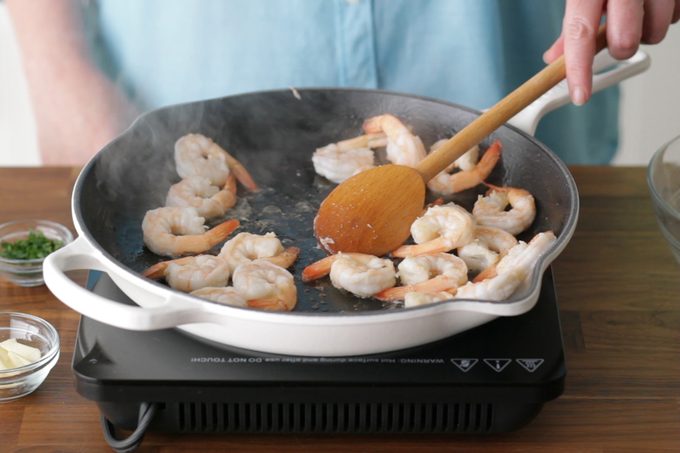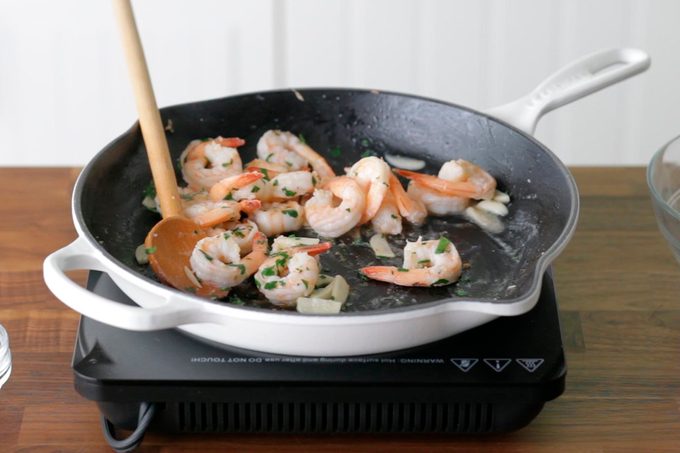How to Cook Shrimp Perfectly Every Time
Updated: Nov. 10, 2022
Shrimp are one of our favorite options for quick and easy weeknight dinners! Learn how to cook shrimp without over- or undercooking them.
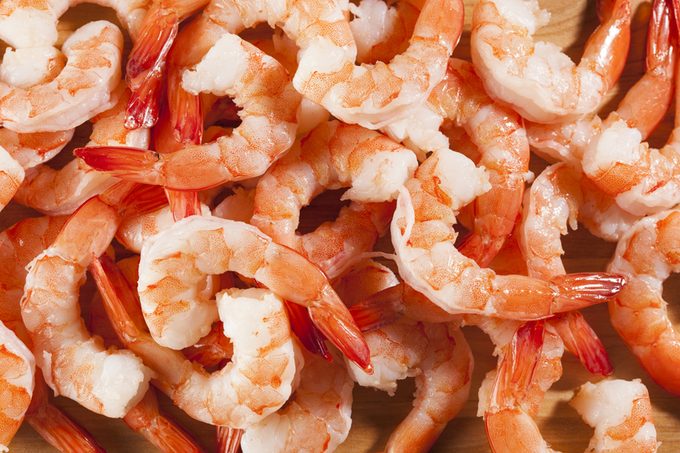
What’s not to love about shrimp? They’re a high-protein, low-calorie option that cooks up in a flash. Making shrimp for dinner is the perfect way to create easy, healthy weeknight dinners! The tricky thing is learning how to cook shrimp so they hit that perfect medium between over-and undercooked.
Our secret: using a pan that’s large enough to cook the shrimp without crowding them. If each shrimp has space to breathe, it’ll have more contact with the hot cooking surface. That creates a rich sear and even cooking throughout the shrimp. But before you start cooking, let’s answer some of your most common shrimp questions.
Do you cook shrimp with the shell on?
Shrimp can be cooked peeled or unpeeled, although they are significantly easier to eat when the shells are removed before cooking. If you’re cooking for company, you should always peel the shrimp so your guests don’t have to do it at the table. When you’re cooking for the family, feel free to skip it! Either way, remove the dark-colored veins inside the shrimp and rinse them in cold water. Here’s everything you ever wanted to know about cleaning, deveining, and prepping shrimp.
Are undercooked shrimp bad for you?
Yes. Raw shrimp contains bacteria that can cause unpleasant reactions, so we recommend fully cooking shrimp. That being said, you don’t want to overcook your shrimp. Overcooked shrimp are tough and chewy.
How can you tell when shrimp are cooked?
To know when shrimp are cooked (and safe to eat), watch the color. A perfectly cooked shrimp is firm enough to curl without being constricted, and it has an opaque pinky color with a sheen. When they are overcooked, shrimp turn matte white or gray.
Another easy way to tell if your shrimp are cooked is if they are curled into a nice C shape. Overcooked shrimp are curled tightly into an O shape. So simply, C = cooked, O = overcooked. Easy! If you’ve been making these shrimp mistakes, find out if you’re guilty of these ways you’re cooking fish wrong, too.
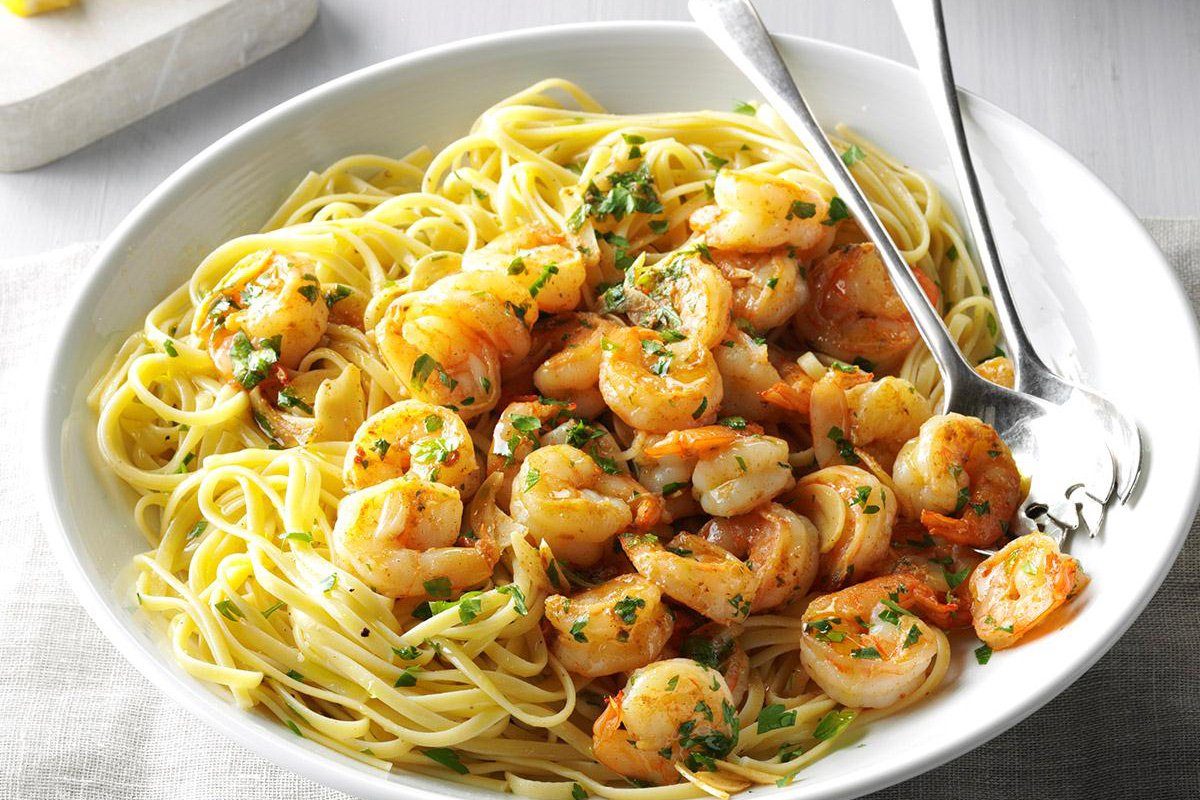
How to cook shrimp
Here’s one of our favorite shrimp recipes, from South Carolina reader Athena Russell, which you’ll want to add to your repertoire. It’s quick enough for a weeknight, but the flavors are 100% company-worthy. It serves four, but if you need to double the recipe for a bigger group, it’s easy to multiply. Before you start, make sure you know how to pick the right type of shrimp for your recipe.
Ingredients
- 2 tablespoons olive oil
- 1 pound uncooked shrimp (26-30 per pound), peeled and deveined
- 3 garlic cloves, thinly sliced
- 1 tablespoon lemon juice
- 1/4 teaspoon salt
- 2 tablespoons minced fresh parsley
- Hot cooked pasta or rice (we like it with zoodles, too)
Step 1: Heat the oil
Start by selecting a skillet large enough to cook all the shrimp without crowding them. If you don’t have a large enough pan, consider cooking the shrimp in two batches. Once you’ve selected your skillet, heat it over medium-high heat and add the oil (or combination of oil and butter).
Step 2: Add the shrimp
When the oil is slightly shimmering, it’s hot enough to add the shrimp! Add the shrimp and cook for about two minutes, stirring often, until the shrimp just start to turn pink. Keep in mind that smaller shrimp cook more quickly than large ones, so pay more attention to the color and texture of the shrimp than to the time they’ve cooked.
Test Kitchen tip: Worried you might have taken the shrimp too far? Immediately remove them from the pan to halt the cooking process. They will continue cooking even when they’re off the heat, but the residual heat from the pan can dry them out.
Step 3: Add seasoning
Now that the shrimp are nearly cooked, it’s time to add the garlic, lemon juice, and salt. Adding them at the last minute allows their fresh, bold flavors to infuse into the shrimp while preventing any tiny pieces from burning. Cook and stir until the shrimp curl inwards and turn pink with a white sheen. Stir in the parsley and serve over pasta or rice.
Test Kitchen tip: If you’re ready to experiment, add in fresh herbs and citrus zest after cooking. Other ingredients may be hiding in your pantry—try these tips that will amp up your recipe. Keeping these ingredients away from the heat maximizes their fresh flavor, adding a delicate accent to the shrimp. Don’t be afraid to experiment with any type of herbs you like! Now that you’re a shrimp master, learn how to grill shrimp!
